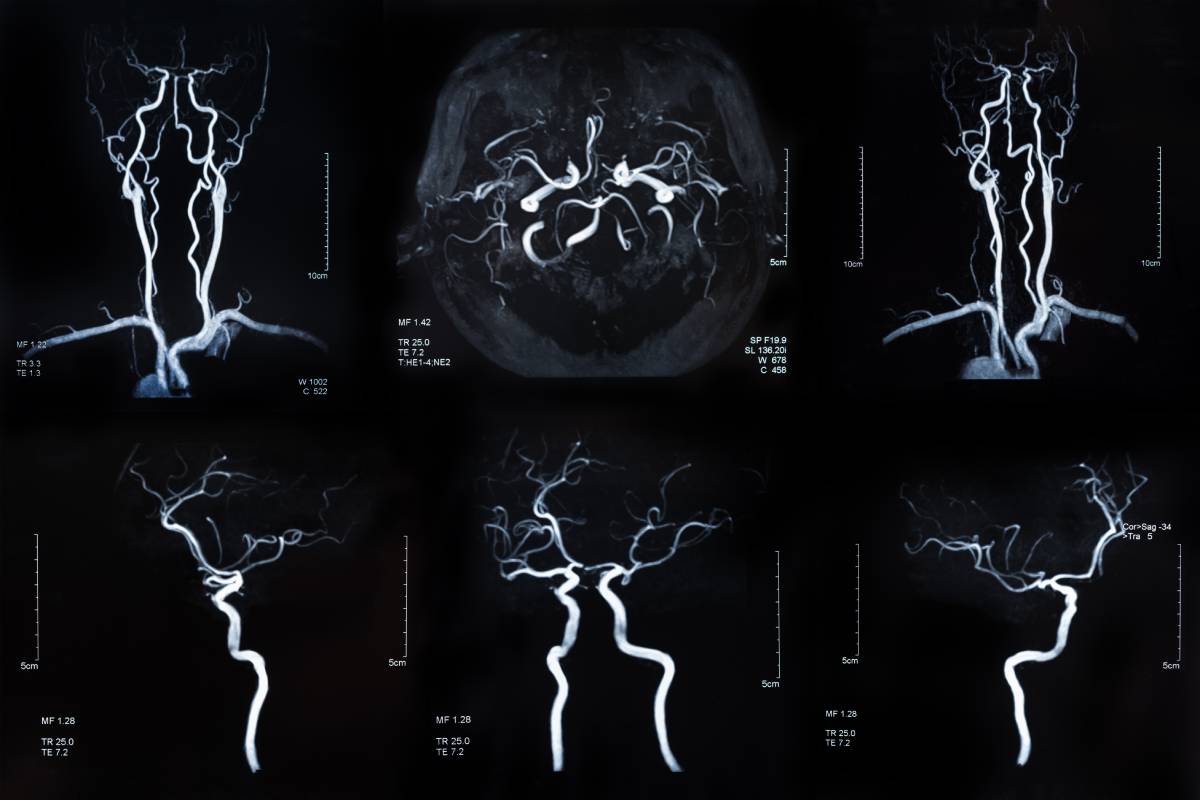
Endovascular therapy (EVT) is the preferred method of treating acute ischemic stroke (AIS) [1]. The operation requires a high degree of patient cooperation, which can be difficult to achieve, given that AIS patients may have difficulty communicating [2]. Fortunately, using anesthesia during the procedure is an option.
Past research indicates that general anesthesia for EVT leads to worse patient outcomes than conscious sedation (CS) [1, 2, 3]. Three separate studies found that patients who experienced lower levels of sedation during EVT exhibited lower mortality, better outcomes, and higher reperfusion rates [2]. Conversely, the study found that “heavy sedation…was an independent predictor of death” [2]. The reason for GA’s worse patient outcomes is unknown. One possibility is the effect of procedural delay: it takes more time for anesthesiologists to administer GA than CS [2]. Other potential explanations include GA’s association with hemodynamic instability, neurotoxicity, hypertension, and prolonged intubation [2].
Despite this evidence, many researchers have recently pointed out design flaws in these studies, calling into question whether GA is riskier than CS. For one, none of the aforementioned reports are randomized or prospective [1]. Each is retrospective, which could lend itself to bias concerning which studies were chosen and who their subjects were [1]. Furthermore, other experiments have encountered evidence to the contrary. Langner et al. conducted a retrospective study of all EVT patients in Germany over five years [4]. They did not find any significant difference in outcome between GA and CS patients [4]. Similarly, Wang et al. found that GA patients did not experience worse outcomes when compared to historical subgroups [5]. Further research is needed to determine which approach to anesthesia management of EVT is safer.
Being aware of best practices can help anesthesiologists avoid adverse events associated with general anesthesia. The decision to administer GA should be based on a careful assessment of the patient’s neurological and medical status [6]. Many anesthesiologists reserve GA for patients suffering from compromised airways, bulbar dysfunction, or other complex situations, in addition to patients having major surgeries [2]. With EVT, GA may not be appropriate when delay, a lack of institutional resources, or a high risk of propagating cerebral ischemia would compromise surgical success [7].
Before the operation, anesthesiologists should identify preemptive strategies to avoid complications [8]. To avoid hypotension, anesthesiologists should consider administering vasopressor therapy and applying invasive monitoring [8]. Anesthesiologists should also communicate with the neurological team to establish hemodynamic parameters [2]. The team should also plan to extubate at the end of the surgery in the absence of contraindications [2].
During EVT, anesthesiologists must closely attend to patients’ vitals. Because GA can lower BP, anesthesiologists must monitor BP throughout the operation to mitigate any hypotensive events [8]. Ventilation and oxygenation are also of concern [9]. Because researchers have not identified the optimal ranges of either measure, anesthesiologists must observe both to prevent hypoxemia and cerebral vasoconstriction [9]. Higher end-tidal carbon dioxide levels and sustained normocapnia are associated with better outcomes, so maintaining both is recommended [9].
Unfortunately, the optimal approach to administering general anesthesia to patients receiving endovascular therapy is still being investigated. Regardless, following these best practices and being conscious of the ever-evolving literature on this topic are helpful first steps for promoting the best possible EVT outcomes.
References
[1] C. Z. Simonsen et al., “Anesthetic strategy during endovascular therapy: General anesthesia or conscious sedation? (GOLIATH – General or Local Anesthesia in Intra Arterial Therapy) A single-center randomized trial,” International Journal of Stroke, vol. 11, no. 9, p. 1045-1052, July 2016. [Online]. Available: https://doi.org/10.1177/1747493016660103.
[2] M. T. Froehler et al., “Anesthesia for endovascular treatment of acute ischemic stroke,” Neurology, vol. 79, no. 13, p. S167-S173, September 2012. [Online]. Available: https://doi.org/10.1212/WNL.0b013e31826959c2.
[3] A. Abou-Chebl et al., “Conscious Sedation Versus General Anesthesia During Endovascular Therapy for Acute Anterior Circulation Stroke,” Stroke, vol. 41, p. 1175-1179, April 2010. [Online]. Available: https://doi.org/10.1161/STROKEAHA.109.574129.
[4] S. Langner et al., “[Endovascular treatment of acute ischemic stroke under conscious sedation compared to general anesthesia – safety, feasibility and clinical and radiological outcome].,” Fortschritte auf dem Gebiete der Rontgenstrahlen und der Nuklearmedizin, vol. 185, no. 4, p. 320-327, February 2013. [Online]. Available: https://doi.org/10.1055/s-0032-1330361.
[5] A. Wang et al., “General Anesthesia During Endovascular Stroke Therapy Does Not Negatively Impact Outcome,” World Neurosurgery, vol. 99, p. 638-643, March 2017. [Online]. Available: https://doi.org/10.1016/j.wneu.2016.12.064.
[6] D. Sharma et al., “Anesthetic Management of Endovascular Treatment of Acute Ischemic Stroke During COVID-19 Pandemic: Consensus Statement From Society for Neuroscience in Anesthesiology & Critical Care (SNACC),” Journal of Neurosurgical Anesthesiology, vol. 32, no. 3, p. 193-201, July 2020. [Online]. Available: https://doi.org/10.1097/ANA.0000000000000688.
[7] D. L. McDonagh et al., “Anesthesia and sedation practices among neurointerventionalists during acute ischemic stroke endovascular therapy,” Frontiers in Neurology, vol. 1, no. 118, November 2010. [Online]. Available: https://doi.org/10.3389/fneur.2010.00118.
[8] M. J. Davis et al., “Anesthetic Management and Outcome in Patients during Endovascular Therapy for Acute Stroke,” Anesthesiology, vol. 116, p. 396-405, February 2012. [Online]. Available: https://doi.org/10.1097/ALN.0b013e318242a5d2.
[9] L. K. Rasmussen, C. Z. Simonsen, and M. Rasmussen, “Anesthesia practice for endovascular therapy of acute ischemic stroke in Europe,” Current Opinion in Anaesthesiology, vol. 32, no. 4, p. 523-530, August 2019. [Online]. Available: https://doi.org/10.1097/ACO.0000000000000746.

